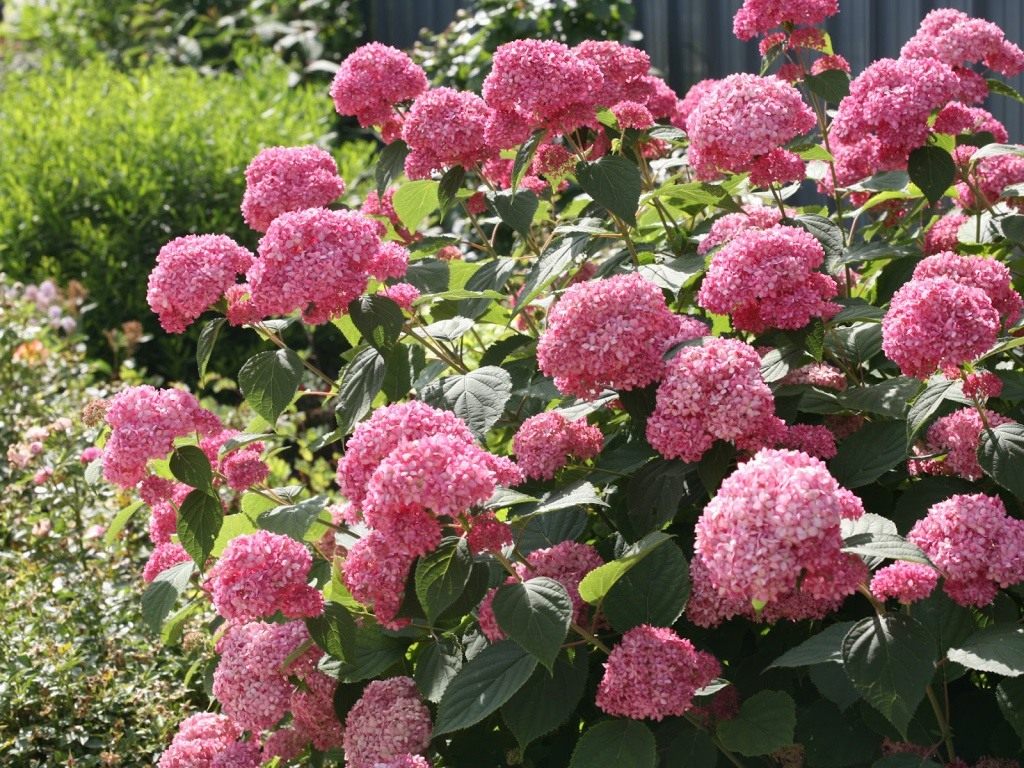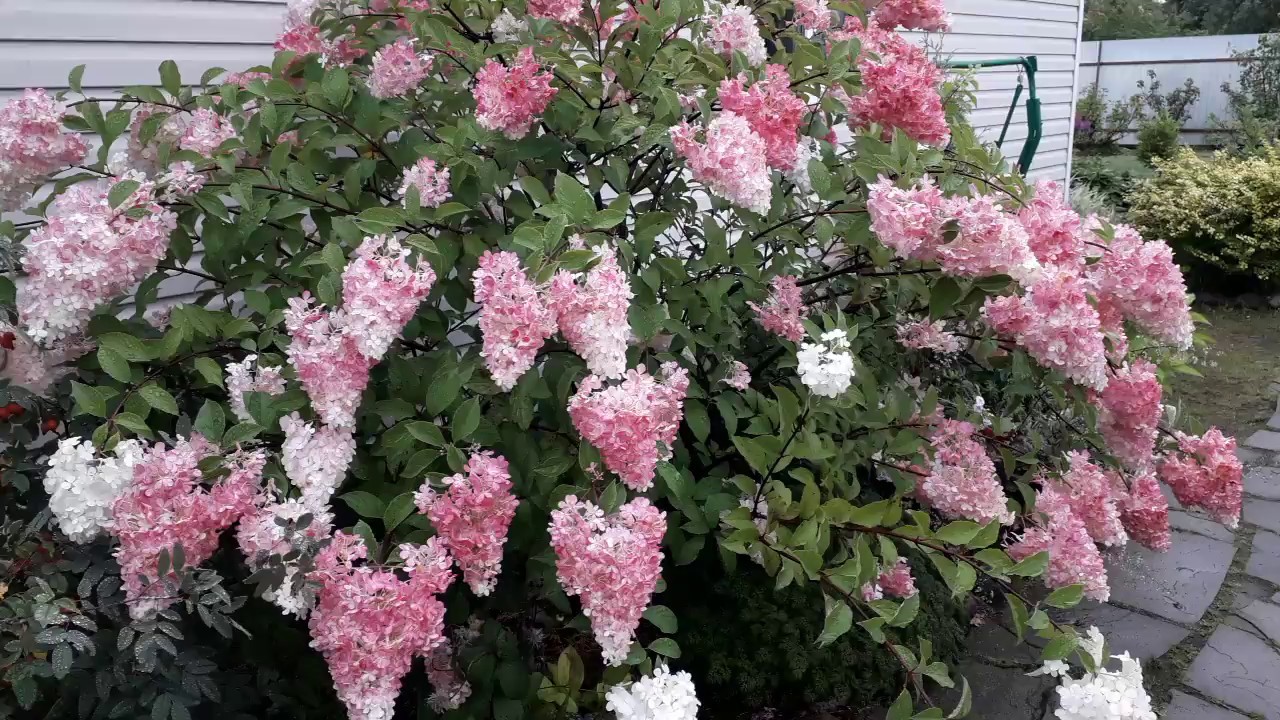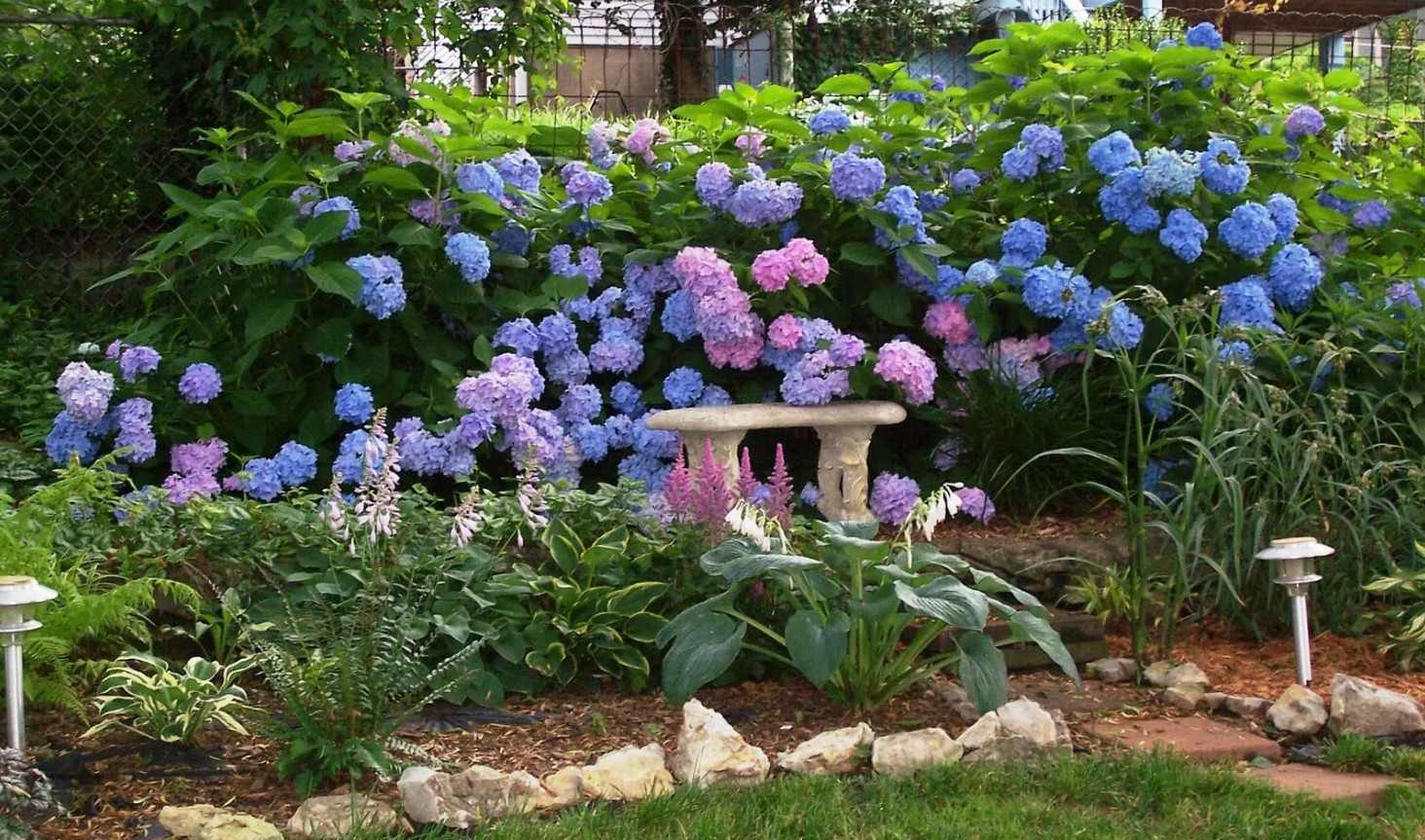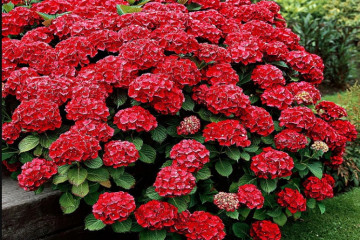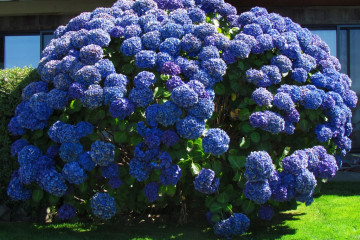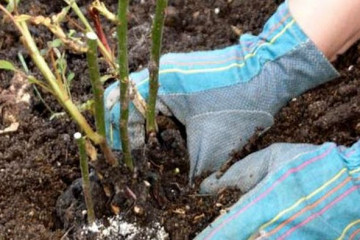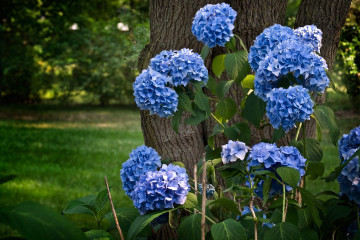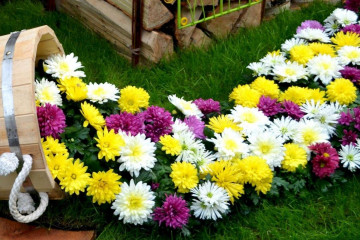Hydrangea Unique - outdoor planting and care
Content:
The real queen can be called the Unicorn hydrangea. This variety fits perfectly into the landscape of the site. The ornamental plant is highly popular among summer residents, gardeners and landscape designers.
Description of the Unicorn hydrangea variety and its characteristics
Gorgeous panicle hydrangea Unic is the most popular variety of its kind. The preference of gardeners is explained by the particularly large inflorescences of the culture. In nature, the variety grows in Japan and China, as well as on Sakhalin.
History of origin
Unique was developed in Belgium in 1950. The work of Robert and Helena de Balder created the perfect hydrangea for the first time. Later, the flower began to gain its popularity. In 1993, the plant won a prestigious award from the Royal Horticultural Fellowship.
Features of the variety
The spreading shrub has excellent decorative properties. The roots grow very quickly, the whole system is superficial. If the planting of the shrub was carried out in light soil, then root shoots appear, which are easy to use for breeding. Unique reaches a height of 2 m, and the diameter of the crown is 3 m. This feature allows you to plant a shrub in the form of a hedge.
The shoots grow vertically and this helps to create the correct round shape for the shrub. The growth of shoots per year is 20 cm. The main decoration of the plant is large, wide inflorescences. Their diameter reaches 25 cm. Flowers do not bear fruit.
Planting and further care
Planting and caring for the Unique hydrangea variety is not as difficult as it might seem at first glance. Even a beginner can cope with clear step-by-step instructions.
Site selection and preparation
The decorativeness and appearance of the plant largely depends on where the hydrangea will be planted. The ideal location is an open, well-lit area. So the gardener will get a sprawling bush with a long and lush flowering. It is allowed to plant a shrub in partial shade. The planting site must be protected from the winds, otherwise they can break fragile shoots.
How to plant
Planting of seedlings is carried out only in spring or autumn. It is preferable to carry out work in the spring, so that the plant has time to fully grow stronger by winter.
Planting technology of hydrangea Unique:
- Landing pits are prepared in advance. The diameter should be from 60 to 80 cm, everything will depend on the size of the root system of the bush. The depth of the pit must be at least 50 cm.
- The distance between the bushes must be at least 2.5 m.
- The pit is well watered, and a drainage layer is laid on the bottom.
- The soil mixture for Unica should be composed of humus and sand combined with peat and soil of high fertility. You need to add urea and Superphosphate to the composition.
- The seedling is lowered into the pit, its roots are well straightened, and the pit is filled with earth.
- The planted plant is watered, and a mulching layer is lined on top.
Watering and feeding
After planting, you need to carefully care for the hydrangea and water it. Frequent watering is necessary until the seedlings take root well in their new location. Further, only 5 waterings per season will be enough.In dry times, it is recommended to spray the crown of the bush.
The first fertilizer is applied in the spring before the buds begin to bloom. At this time, nitrogenous compounds or urea are suitable. In summer, potash or phosphorus fertilizers are used. Experienced gardeners recommend spilling the plant with potassium permanganate under the root or along the crown. So the shoots of the bush are strengthened.
Pruning
The hydrangea is cut off only in the spring, when the sap flow of the plant has not yet begun. Damaged and broken shoots must be removed, faded inflorescences are shortened to the first bud. Last year's shoots are cut by a third. The branches that thicken the shrub are also removed. If the shrub requires complete rejuvenation, then the branches must be cut to the root.
Preparing for winter
Despite the fact that the panicle hydrangea of the Unique variety is considered frost-resistant, in order to prevent freezing of the buds, it is better to cover the shrub for the winter. In the southern latitudes, an adult bush is simply spud. In regions with cold winters, the shoots are bent to the ground, fixed and covered with spruce branches.
Reproduction
Hydrangea is equally well bred by cuttings, by dividing the bush and layering.
Most often, propagation by cuttings is used, since the method is effective and simple. In the spring, during pruning, you need to take care of the preparation of planting material. Cuttings can also be cut in summer, when the shoots are saturated with moisture as much as possible. Spring cuttings must contain at least 4 buds. The cut off shoots are placed in a container with a growth accelerator solution, where they are left for several days.
After that, the cuttings can be planted in prepared beds, deepening them by 2 buds. The soil is loose and sour. At first, planting must be protected from the bright sun. Only watering and gentle loosening are used as care. When the first leaves appear, the shelter is removed from the cuttings.
For culture propagation, layering is also used. To do this, in early spring, on the bush, you need to choose the shoots that are lowest to the soil. Small furrows are made for them under the bushes, and the shoots themselves must be carefully bent to the soil, and then fixed with wire. In the place of rooting, cut off the bark or make an incision.
The attachment point is covered with earth, and the top should remain on the surface. During the season, the cuttings are watered as often as the mother bush. It will be possible to separate young seedlings and replant to a permanent place next spring.
By dividing the bush, hydrangea is not often bred. The plant is growing rapidly, so it is very difficult to divide it. The division of the bush is performed in the spring, at the time when the transplant is carried out, if necessary. Previously, the bush is well watered, after which it is pulled out of the ground with a shovel. The roots are cleared of the earth, and the shrub is divided into several parts. The resulting cuttings are planted in a planting pit and well watered with water.
Diseases and pests, ways to deal with them
The bush must be protected from pests and diseases. Hydrangea Unique often suffers from attacks by aphids, spider mites, thrips, green bugs and others. As a preventive measure, the plant periodically needs to be sprayed with insecticides, and sometimes folk remedies are used. Mechanical traps can be used for large shrubs.
In addition to chlorosis, hydrangea sometimes has cancer and powdery mildew. Gray rot and septoria blight are common on shrubs. For treatment, you can use folk recipes and fungicides. In advanced cases, the shrub must be dug up and destroyed, and the soil under it is treated with potassium permanganate or fungicides.
Use in landscape design
In garden design, hydrangea is used quite often. This shrub is especially loved by landscape gardening specialists. An excellent combination of the Unique variety with other types of hydrangeas is achieved by planting them side by side, taking into account the variety of shades. Cultural use cases:
- Often the flower is planted in group plantings of trees and shrubs. In this case, hydrangea becomes a bright accent.
- As a central plant and on a green lawn, Unique hydrangea also looks very impressive. A vibrant composition is obtained thanks to the colorful flowers and the beautiful shape of the shrub.
- Hydrangea can be found in city parks. The increased gas content of the air is not terrible for this plant. Lush and long-lasting flowering allows you to plant hydrangeas in flower beds.
- Hortensia Unicum is a chic decoration of a personal plot and an excellent option for forming a hedge. The spectacular appearance is achieved due to the good diameter of the crown of the shrub and lush flowering.
Growing the Unicorn panicle hydrangea at home is available even for a beginner, you just need to adhere to a simple plant care scheme. As a result, the culture will respond with abundant flowering and a thick head of greenery.
